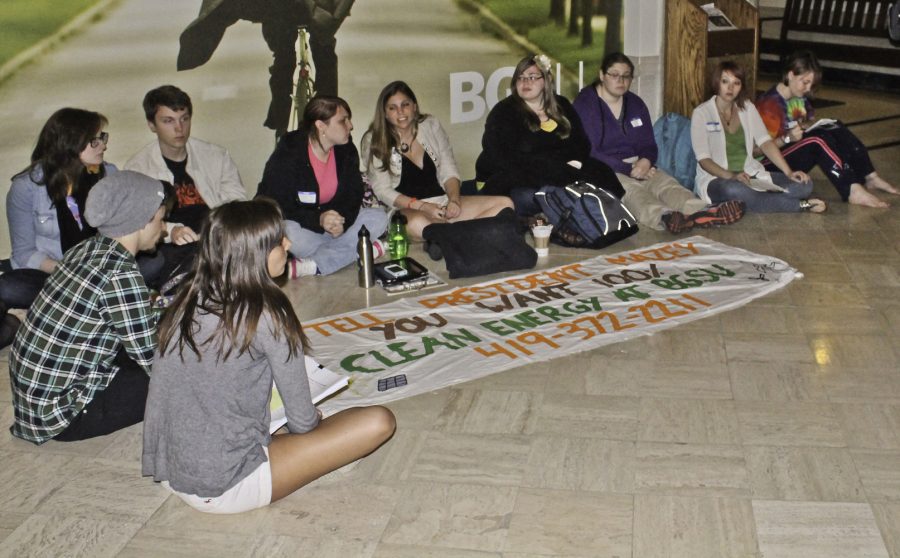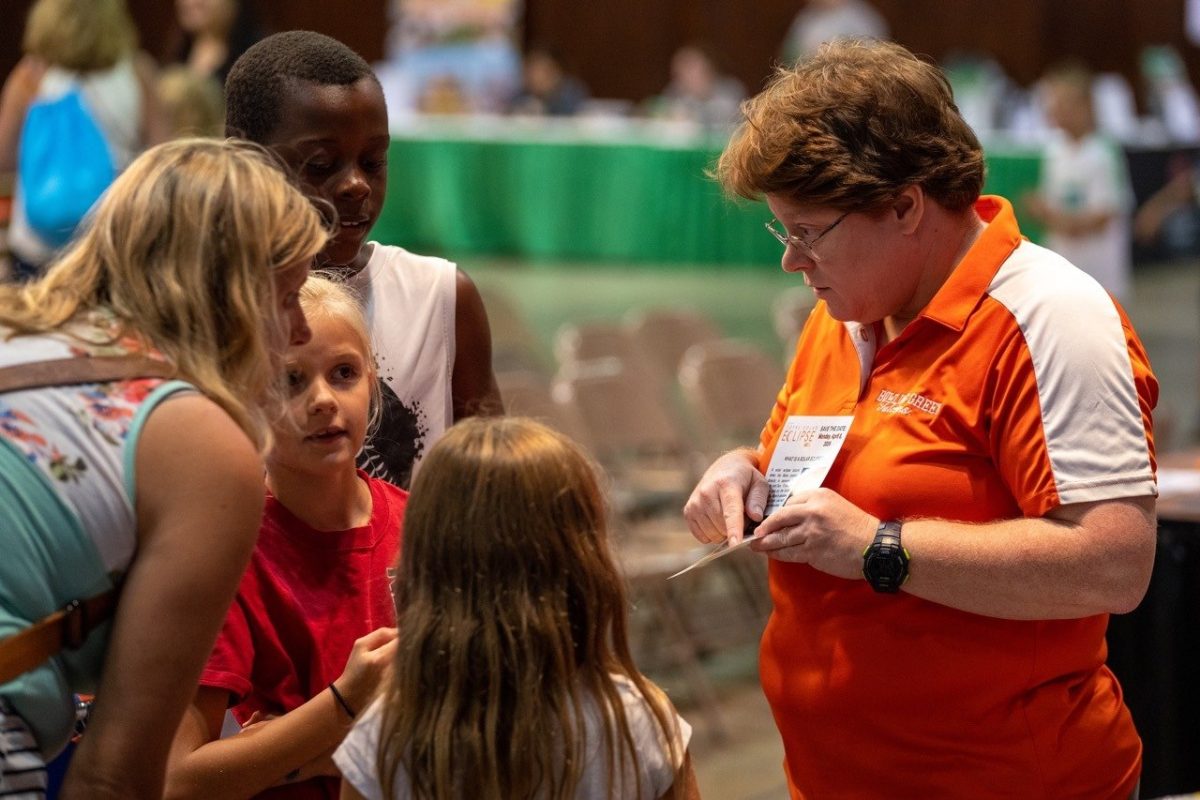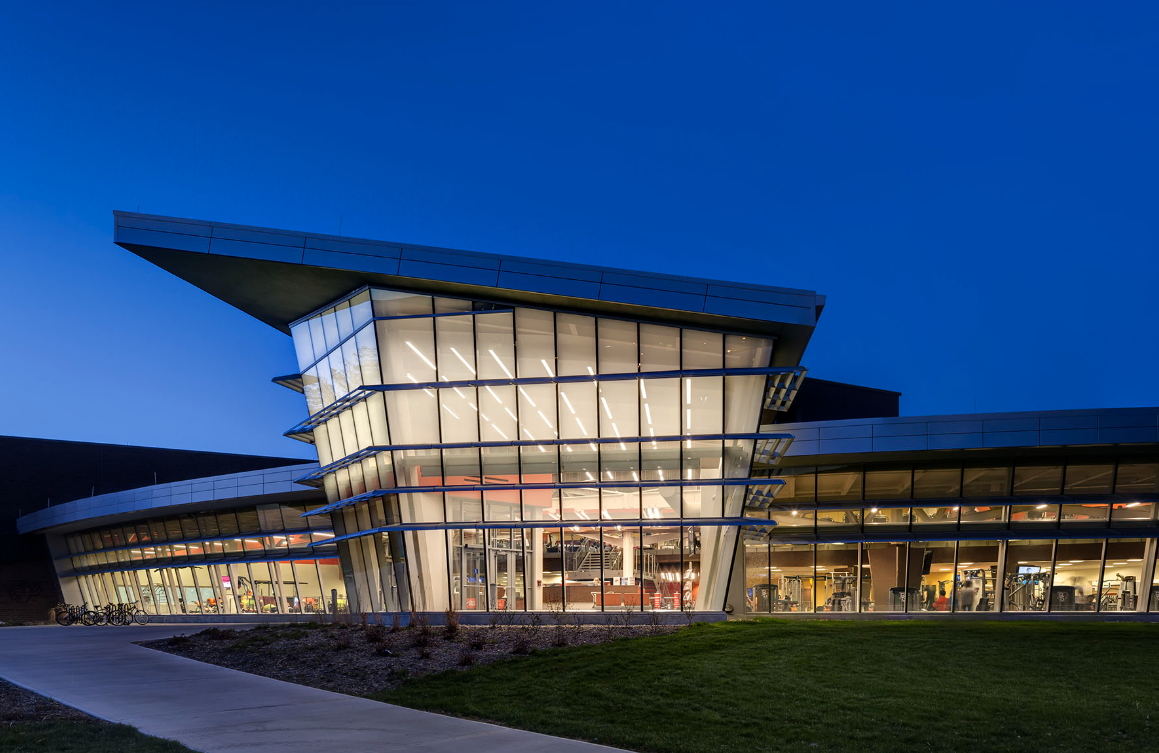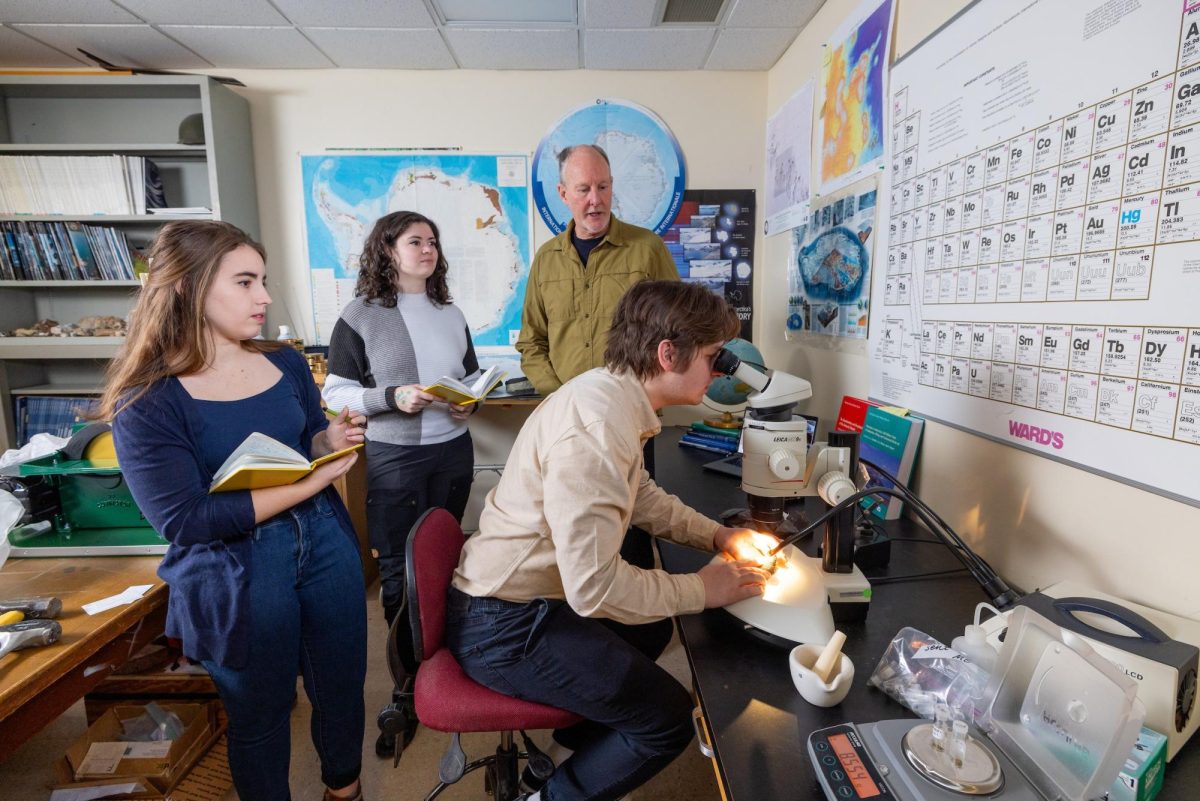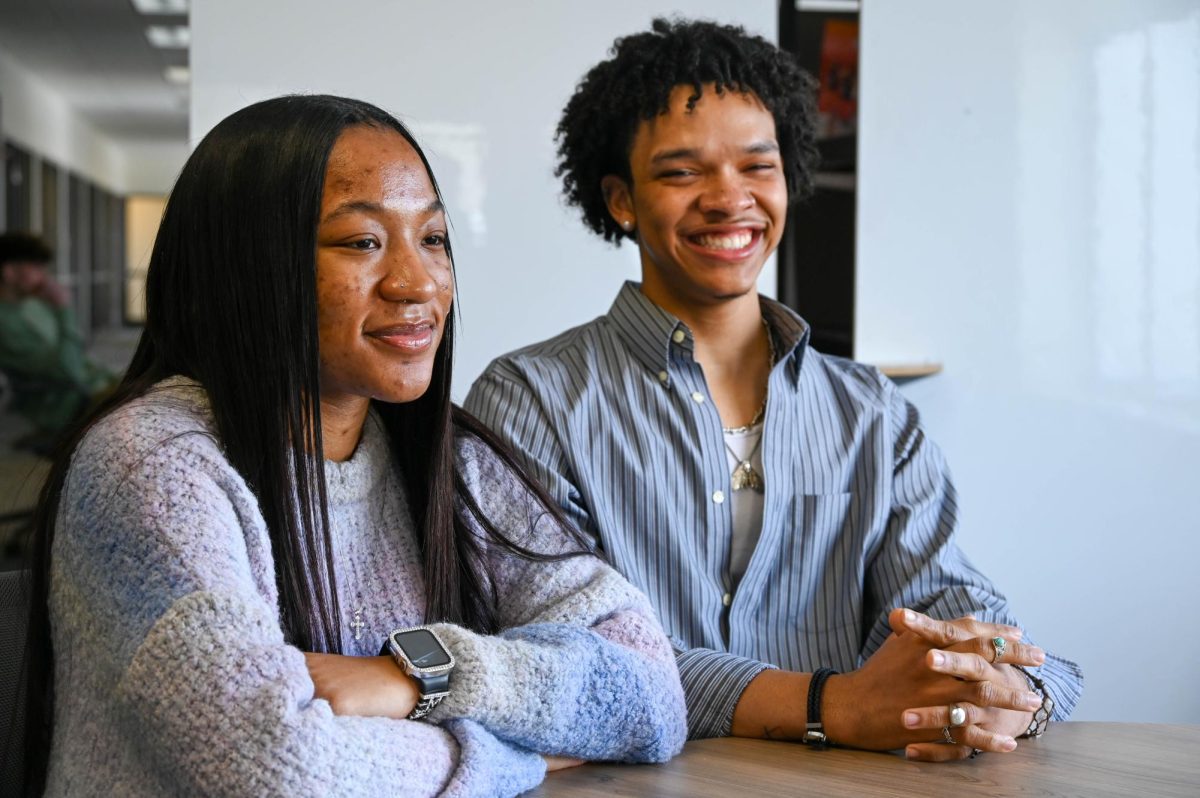More than a dozen students with the Environmental Action Group repeated their call for 100 percent clean energy at the University by 2020 through a sit-in protest at McFall Center this past Friday.
Josh Chamberland, president of the group, helped deliver a written request to meet with President Mary Ellen Mazey personally about potential environmental changes at the University.
“We think it should be a top priority,” Chamberland said. “You have to set a goal.”
Though Mazey was out of her office early Friday evening, Chamberland appreciated meeting with the president’s office assistant.
“I was glad they let us up,” he said. “We want to work with the University.”
The protest comes as the Environmental Action Group has appealed to students through social media and a petition from thousands of students requesting the University fully switch to green energy. Earlier this week, the group invited students to call Mazey’s office to support the proposed initiative.
While the University agrees with some of the group’s ideas, the “arbitrary” date of 2020 makes financial backing of having 100 percent clean energy unfeasible, said Dave Kielmeyer, University spokesperson.
A complete switch to clean energy would cost somewhere between $165 to $225 million, according to an independent engineering firm’s report commissioned by the University, Kielmeyer said.
At the protest, Chamberland initially denied knowing of any research from the University and said he would welcome such information. Later on Friday, however, he conceded of knowing of a report, but in meeting with University officials earlier this month, said they denied him the information.
“We don’t really know what the research is,” Chamberland said. “When I was meeting with [Assistant VP of Campus Operations Bruce Meyer] I was like, ‘What company is this?’ and we really haven’t gotten answers back from it.”
Kielmeyer said the report would be accessible to the group if it formally requested it, but as of Friday, the group hadn’t asked for it.
“Anything we commission is a public record,” he said.
The group plans to request information from the report later this week and to follow up with its findings, Chamberland said.
Other controversy arose when EAG organized phone calls to Mazey in support of the initiative. Initially, all the calls came from one particular phone line, Kielmeyer said.
The University responded by sending University Police Captain Tim James to advise the students to refrain from making numerous calls from one line, as it could come across as phone harassment, Kielmeyer said.
Instead, students were told to call from multiple lines for security and credibility reasons, he said.
A picture circulating on Facebook, however, stated that “BGSU sent police to try to stop students from calling their president.” The picture is attributed as being from the Environmental Action Group.
Acknowledging a “misunderstanding,” Chamberland later stated Friday that police did not tell those in his group they could not call Mazey. Chamberland did say the captain’s presence came off as “intimidation” from the University.
Though the group was unable to meet with Mazey on Friday, sophomore Richard Kopchock, who participated in the protest, said the sit-in protest succeeded in demonstrating a student concern for environmental action.
“Clean energy is the future,” Kopchock said. “We shouldn’t sit around waiting [for change].”
Editors Note: Abby Welsh, pulse editor, and Dylanne Petros, reporter, contributed to this story.


